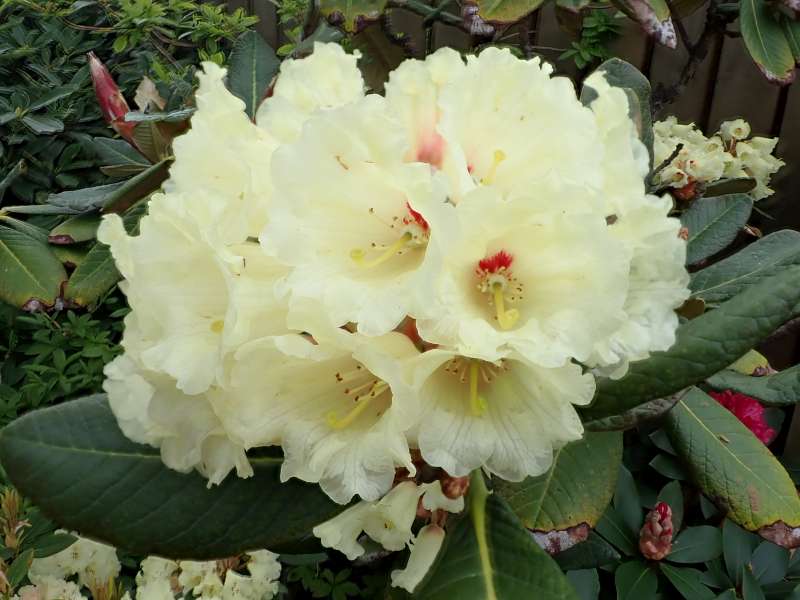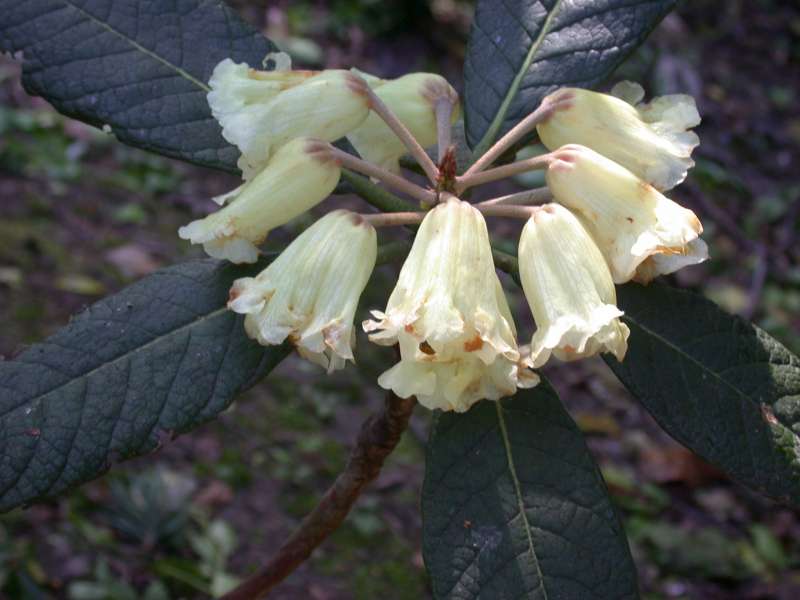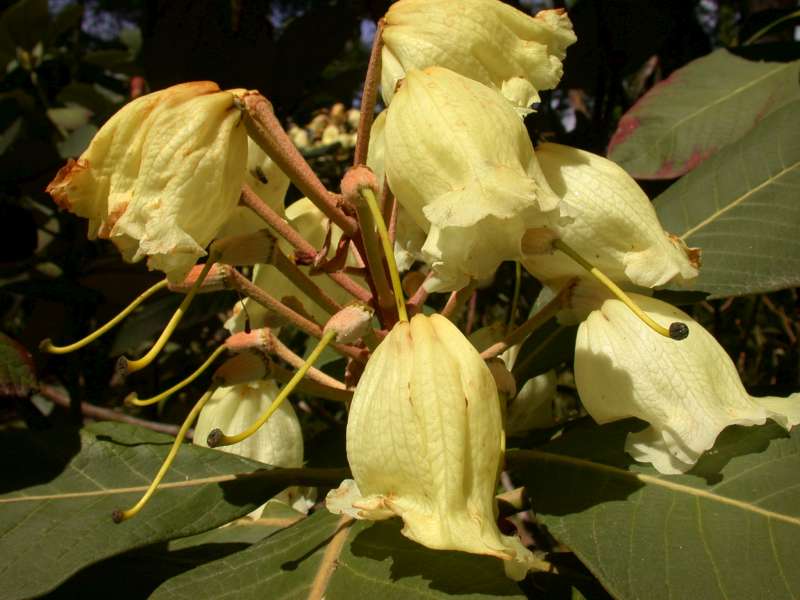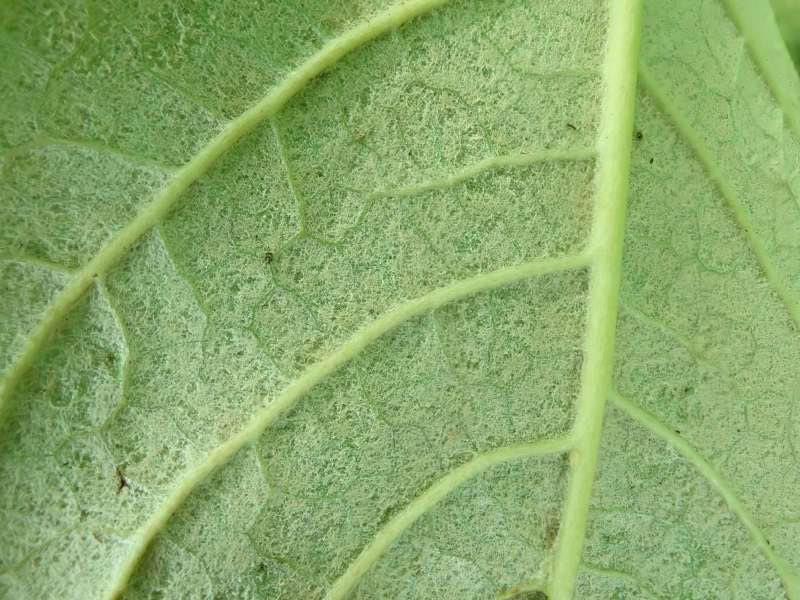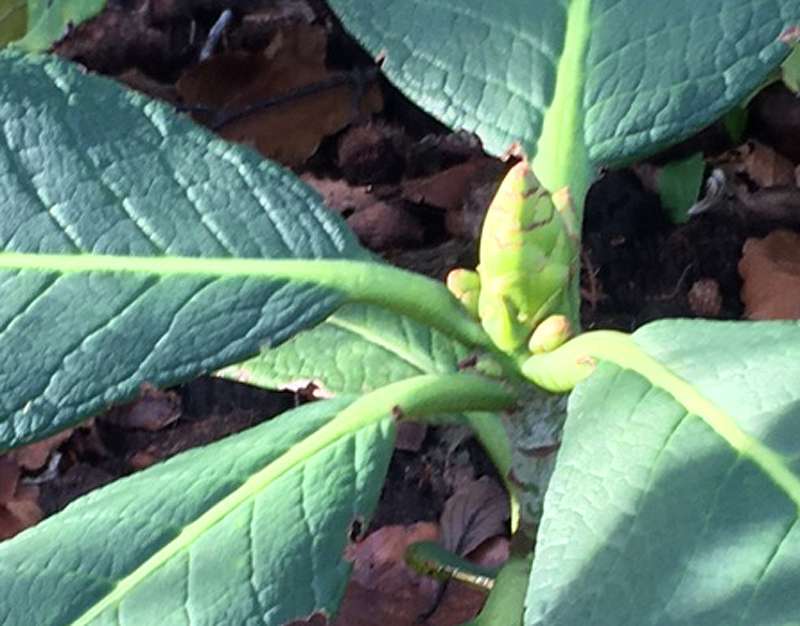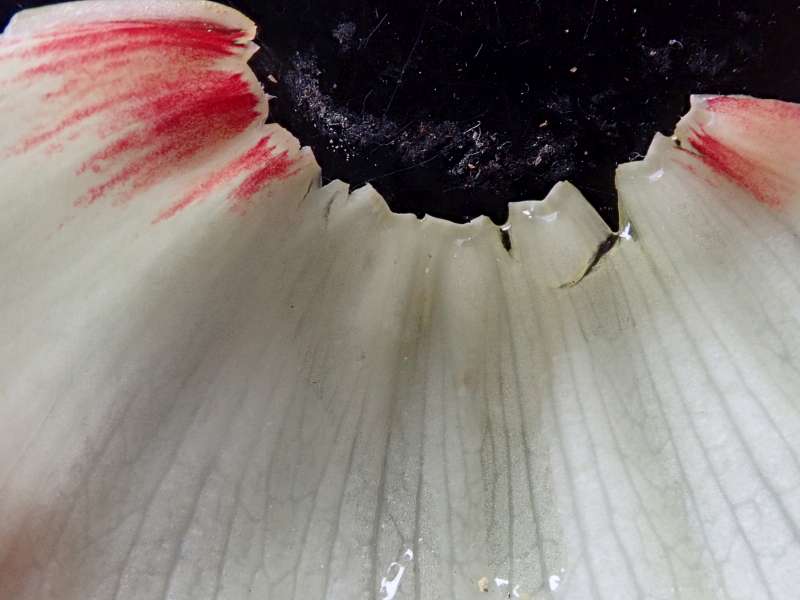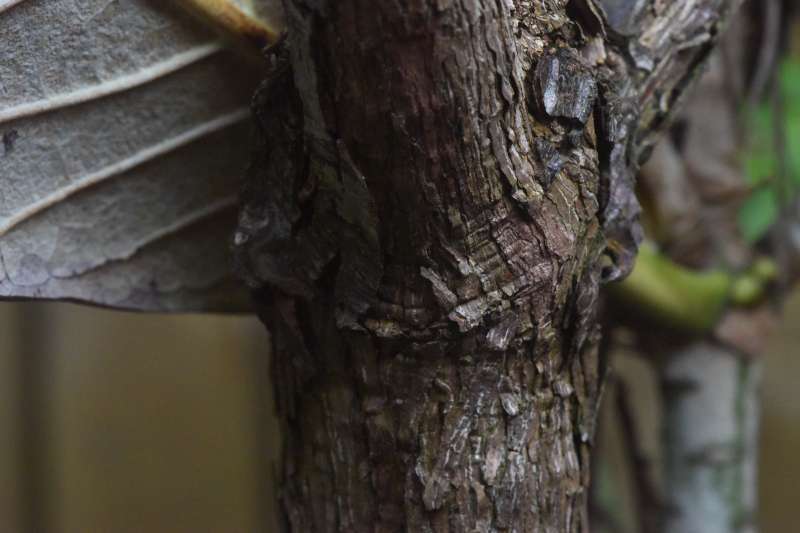Rhododendron sinofalconeri
Billeder af Rhododendron sinofalconeri
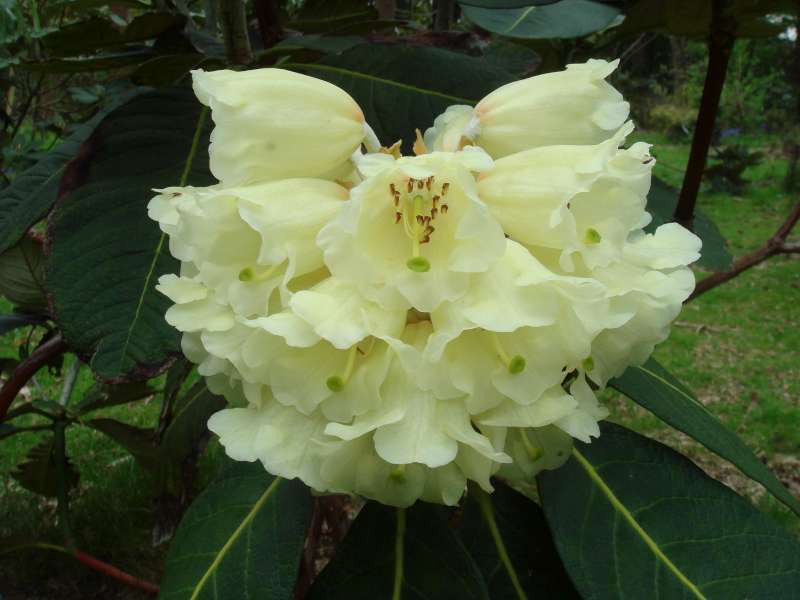
Beskrivelse
R. sinofalconeri (Falconera). En stor kompakt bred stedsegrønt træ med blade op til 30 cm i længden som er omvendt ægformede med lysebrunt indument på undersiden. Ikke kirtlede frugtknuder og blomsterstilke. Blomsterstanden er flad-toppet med lysegule til gule blomster. R. sinofalconeri er hjemmehørende på et lille område af S-Yunnan (Har mere runde blade her) og N-Vietnam’s grænsen ved 2700-3000 m og er mere hårdfør end R. macabeanum.
Hans Eiberg
● R. sinofalconeri frø. Foto: Hans Eiberg
ARS
Flora of China
RBGE Herbarium; R. sinofalconer
Chinese Virtual Herbarium, Map
Chinese Virtual Herbarium, Photo’s
“Eastern form” from Yunnan
The “Eastern form” is the form from Yunnan China. There may now be only one extant population on this side of the Red River which is a mountain called Lao Jun Shan which is where Peter Cox and I collected it back in 1995. I was just there again a couple of weeks ago and that pop has not really changed or become threatened. Most sinos in cultivation are from Fan Si Pan just across the border in N Vietnam. A couple of weeks ago we also visited another 10,000 ft. peak across the border from Vietnam in S Yunnan which had “sinofalconeri” on the very top.
This peak is on the same side of the river as is Fan Si pan so I expected the plants to look like those on Fan Si pan. Some did, some did not. There were some that looked like the Yunnan form, there were some that looked like basilicum (known just to the north in the next range or two over) and some that looked remarkably like the “alpine mac” that I collected way up north on Saramati in NE India! So, I think there is a bit of introgression going on and, at least on this peak, things are still being sorted out. These plants will be available in a couple of years under the collections YUGU#. Sorry I do not have any definitive answers, every time I go out I become more and more confused.
Steve Hootman RSBG
I would not think there would be any differences in hardiness among these different forms, they are all from about the same altitudes in the same general area. R. macab with us is definitely more tender for what it is worth.
Steve Hootman


